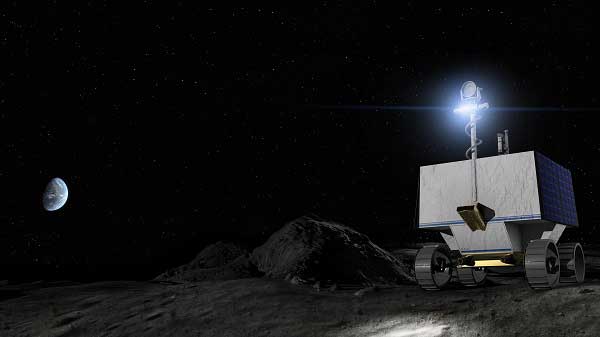MOFFETT FIELD, Calif. (NASA PR) — When NASA’s Volatiles Investigating Polar Exploration Rover, or VIPER, explores and samples the soils at the Moon’s South Pole, scientists anticipate it will reveal answers to some of the Moon’s enduring mysteries. Where is the water and how much is there? Where did the Moon’s water come from? What other resources are there?
What other questions could VIPER answer? NASA sought ideas and recently chose eight new science team members and their proposals that expand and complement VIPER’s already existing science team and planned investigations.
The selected co-investigators, their institutions, and their project proposals are:
Kathleen Mandt, Johns Hopkins Applied Physics Laboratory, or APL, in Laurel, Maryland, tracing lunar volatile sources based on compositionParvathy Prem, APL, modeling active volatile sources and transport during the VIPER missionMyriam Lemelin, University of Sherbrooke in Canada, unmixing the spectral variations of the south polar region to retrieve its composition, volatile content, sources and modification processesMasatoshi Hirabayashi, Auburn University in Alabama, statistical and thermal approaches to constrain the impact-induced regolith-volatile distribution mechanismsCasey Honniball, NASA’s Goddard Space Flight Center in Greenbelt, Maryland, comparing the exchange of water and methane with the lunar surface and exosphereLaszlo Kestay, U.S. Geological Survey in Flagstaff, Arizona, ground truth for lunar resource assessmentsBarbara Cohen, NASA Goddard, VIPER measurements of nitrogen and noble gases in polar regolithKevin Lewis, Johns Hopkins University in Baltimore, a geophysical traverse at the lunar south pole with the VIPER accelerometers
“These additions to the science team will provide new and fresh perspectives, enhance the expertise in critical areas, and really allow the team to get the maximum science value out of the VIPER mission,” said Sarah Noble, VIPER program scientist in the Planetary Science Division at NASA Headquarters in Washington.
The VIPER mission is managed out of NASA’s Ames Research Center in California’s Silicon Valley, and is scheduled to be delivered to the Moon in late 2023 by Astrobotic’s Griffin lander as part of the Commercial Lunar Payload Services initiative. Construction of the rover will begin in late 2022 at NASA’s Johnson Space Center in Houston, while the rover flight software and navigation system design will take place at Ames. Astrobotic will receive the complete rover with its scientific instruments in mid-2023 in preparation for launch later that year.
NewsRead MoreParabolic Arc
– Advertisement –
